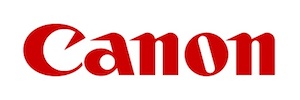Cary Sherburne: Hi, I’m Cary Sherburne, Senior Editor at WhatTheyThink.com and I'm here with Robert Carrier from PULP and you guys have made pretty substantial progress to transitioning to what we might call marketing services provider, although you and I have talked about neither of us are really happy with that.
Robert Carrier: Right.
Cary Sherburne: With that but in the process of doing that, of smaller, more varied jobs and faster turnaround times and digital content and all that stuff, how does automation kind of play into the whole thing and why is that important?
Robert Carrier: We saw early on when we added digital to our mix as an offset company that there were a lot of steps that we followed to get a job from entering production to delivery for offset. There were probably 15 or 16 of those steps. And as we, again, as we got into digital and we saw the cost of some of the jobs that go out, their selling price $30, 40, 50 didn’t make sense that we had those 15 or 16 steps that we had to apply to that. So we went to work on those steps to try and widdle those down and like most commercial printers, most of the ones we talked to anyway, we were able to eliminate three or four, five of them. It was not until that we added software that added workflow and automation to our digital department that we were able to cut those 10 or 15 steps down to three steps and get the job out the door and still make money on those, again, those $27 business order, business card orders, something like that. And not just to make money on them but enable us to literally hundreds and thousands of those jobs in a day or a week.
Cary Sherburne: That’s great and so you went out looking for some kind of solution and you found a solution and then in terms of how you get that implemented, was that an easy process or was that.
Robert Carrier: With the solution that we picked it was easier than some others that tried, that we picked and tired. But yeah, it was I would say it was a 60 to 90 day period that it took to roll this solution out.
Cary Sherburne: And so the training, bringing your people up to speed and getting them to understand what needed to be done that was hard or it was easy or?
Robert Carrier: It was not so difficult. It was really easier than it should have been. Again with the solution that we picked I think that was the key but we didn’t bring everybody on board at once. We went to this salesperson and this CSR and said this is, you know, you’re doing it this way and then transitioned the business that direction. The great thing is we used this solution for our digital area. In the not too distance future, this solution’s going to support our offset area too and we’re going to move all that work away from a traditional print MIS system to this new automated solution and really speed the whole process up for the company.
Cary Sherburne: Yeah, and as I understand it, this is a software is a service so it’s posted in the Cloud.
Robert Carrier: Yes, yes.
Cary Sherburne: In the Cloud and therefore a lot more cost effective for you than buying the servers and the software license.
Robert Carrier: It certainly is and as a part of our digital business that is true. But I think that as we apply the same system to our offset business the way that it handles the files it’s, you know, your files and your workflow becomes a part of this system. I think we’ll bring that; it’s great to have the option to bring that in-house. I think we’ll bring that in-house just for that quicker in-house file transfer.
Cary Sherburne: So when people are looking for solution like that they should look at the flexibility. They should be able to choose between being hosted or being licensed software onsite?
Robert Carrier: Exactly. Exactly. Flexibility and automation, the storefront, the web to print that your customers see, those kinds of things don’t matter nearly as much as the automation that you can get on the backend to actually take the job from web to ship.
Cary Sherburne: That’s great. Well we wish you well as you continue to evolve.
Robert Carrier: Thank you.

 Official camera partner of WhatTheyThink and the drupa daily.
Official camera partner of WhatTheyThink and the drupa daily. 











